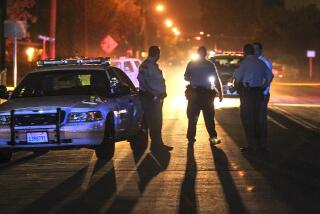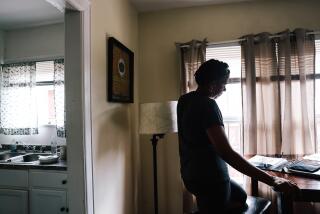Off the Shelf: Letting go of a life’s work
With emotions wavering between relief and regret, I remove a battered spiral notebook from a metal file cabinet and place it in an acid-free cardboard box open on my office floor. The notebook contains an interview I conducted in December 1984 at a VA hospital in Johnson City, Tenn., with 85-year-old Alonzo Mann. Some seven decades earlier, he told me, he’d seen a murderer carrying a girl’s body through the lobby of an Atlanta factory, but he was only 14 and too scared to call the police. As a result, an innocent industrialist was convicted of the crime and later lynched.
Mann’s assertion goes to the heart of an enduring debate about a great historical mystery. To me, however, the notebook possesses more than just documentary value. It contains the first research I conducted on a project that consumed nearly half my life.
Six years after the publication of “And the Dead Shall Rise,” my book about the 1913 murder of Mary Phagan and the subsequent lynching of Leo Frank, I am packing my papers for donation to the Georgia Historical Society. The contents of a dozen bulging plastic bins and six overflowing file drawers must be indexed, then placed in the cartons that will carry them from Los Angeles to their new home: Hodgson Hall, an 1875 athenaeum just off Savannah’s live-oak-canopied Forsyth Park.
This is a tedious task, but what makes it more than simply time consuming is that every item conjures intense memories. There go a half-dozen file folders containing notes from tearful conversations with the children of the men who lynched Frank. A bundle of original letters and legal documents recalls its generous source: the now-dead son of a lawyer involved in the case. Dog-eared pages from an Atlanta phone book might not seem significant, but they’re links to the next of kin of a key witness, as well as reminders of the many calls I made trying to track him down. As for the stacks of Xeroxed newspaper stories, they bring back the countless hours I sat staring at microfilm machines in libraries across the country, hoping that by sheer dint of concentration I could summon the past.
Taken together, these materials might well serve as the basis for an exhibit on a kind of research no one in their right mind will ever again conduct. Working without scanners or flash drives, I relied on anachronistic devices and a willingness to camp out in archives for weeks. I ran off most of my newspaper copies on wet process printers, some set for negative film (black print on white background) and others for positive (white print on black background). At university special-collections departments, I took notes with stubby pencils while wearing white gloves.
The piece de resistance is my card filing system. Using 3-by-5 color-keyed cards organized by hand-labeled tabs -- “Debate RE rape,” reads one, “Writ of Habeas Corpus,” another -- I ultimately filled four shoe-box-sized, marble-paper-covered boxes of the sort favored by graduate students of another era. In my best moments, I think this is the stuff of a magnificent obsession. In my worst, I merely shake my head.
My putative rationale for holding onto everything has been that I’ve been serving as the consultant for “The People v. Leo Frank,” a 2009 PBS documentary inspired by “And the Dead Shall Rise.” The filmmaker and I have needed the papers for fact-checking purposes. But if this is true as far as it goes -- director Ben Loeterman and I have spent a lot of time rifling my files -- the real reason has less to do with the material’s continuing utility than with my fear of letting it go. During the nearly 20 years I spent amassing my files, I’ve grown fond of them, much as numismatists grow fond of their coins. I’ve also taken strength from them. Here is proof that I’ve done the work that allowed me to identify the men who’d perpetrated Frank’s lynching, arguably America’s worst anti-Semitic incident. And yet, for all of this, the papers have also tied me to a project I was finished with, which is a bad thing.
As I place the last of the files in the acid-free boxes, I realize I am rolling away a stone that for too long has impeded my future. Getting the material out of the office will allow me to move forward. Furthermore, not only do the papers belong in Georgia, where most of the events they describe transpired, but now they will be accessible to generations of scholars, which is reassuring, as the Frank case remains a topic of genuine fascination.
The story is rife with conundrums and rich with meaning. An all-white jury convicted Frank largely on the testimony of a black man -- unheard of in the Jim Crow South. Adolph Ochs, publisher of the New York Times, compromised his newspaper’s objectivity in an attempt to exonerate Frank. Both the Anti-Defamation League and the modern Ku Klux Klan grew out of the affair.
Ticking off these facts, I feel a pang. How am I going to get along without my files? This is the material of a lifetime. But then again, as Todd Groce, president of the Georgia Historical Society, has told me: “Remember, you can come visit all of it any time you want.”
Oney is the author of “And the Dead Shall Rise: The Murder of Mary Phagan and the Lynching of Leo Frank.”
More to Read
The biggest entertainment stories
Get our big stories about Hollywood, film, television, music, arts, culture and more right in your inbox as soon as they publish.
You may occasionally receive promotional content from the Los Angeles Times.






